As part of the celebration of the 70th anniversary of Topps baseball cards, we've asked fans (as well as our staff) to submit their all-time favorite baseball cards, and we've broken them down by team. We'll be revealing submissions regularly throughout the season, ranging from the famous to the weird, and everything in between.
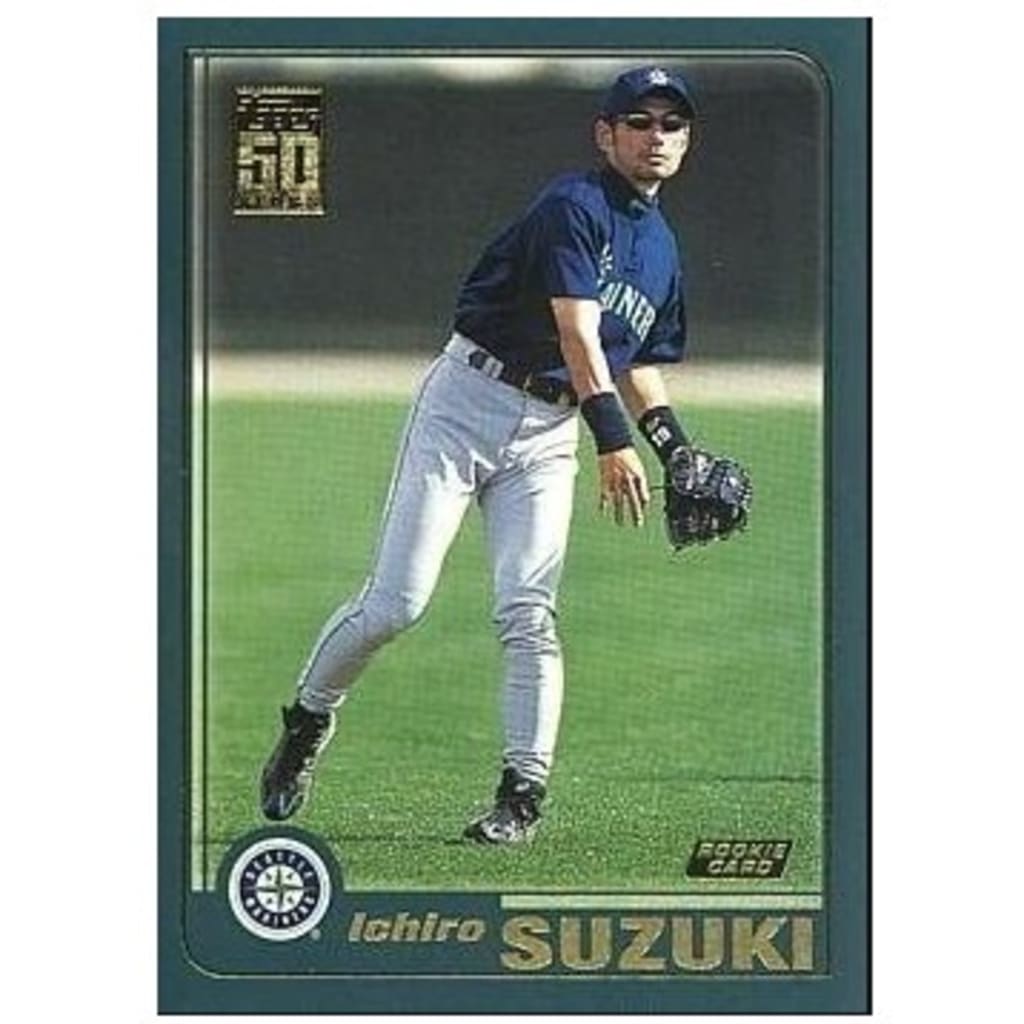
Classic Mariners rookie card: Ichiro Suzuki, 2001 Topps
We already spotlighted Ken Griffey Jr.’s 1989 Upper Deck card -- one of the most iconic cards in the history of the hobby -- so how about another Mariners legend?
Ichiro’s rookie card was part of Topps’ ‘01 set, marking the company’s 50th year. The metallic gold lettering and trim give this simple design a touch of elegance, and the photo captures Ichiro’s aura, even while he appears to be making a routine warm-up throw in the outfield.
This card was submitted by Patrick Wahl, who lives in Germany and has been collecting cards since the mid-’90s, although it hasn't always been easy to find baseball card retailers in the country.
“This particular card I actually got in a pack in 2001, which I bought over the internet,” Wahl wrote. “Even as a Yankee fan, I still followed Ichiro with Seattle and was impressed every year with what he did on the field. I’ve kept this card under lock and key until to this day.”
The 2001 rookie class was historic, with future Hall of Famers Ichiro and Albert Pujols winning the Rookie of the Year Awards. Interestingly, Pujols was not part of Topps’ 2001 set, likely because he was a relative unknown before bursting onto the scene with the Cardinals that year, whereas Ichiro was coming off a successful career in Japan. -- Thomas Harrigan
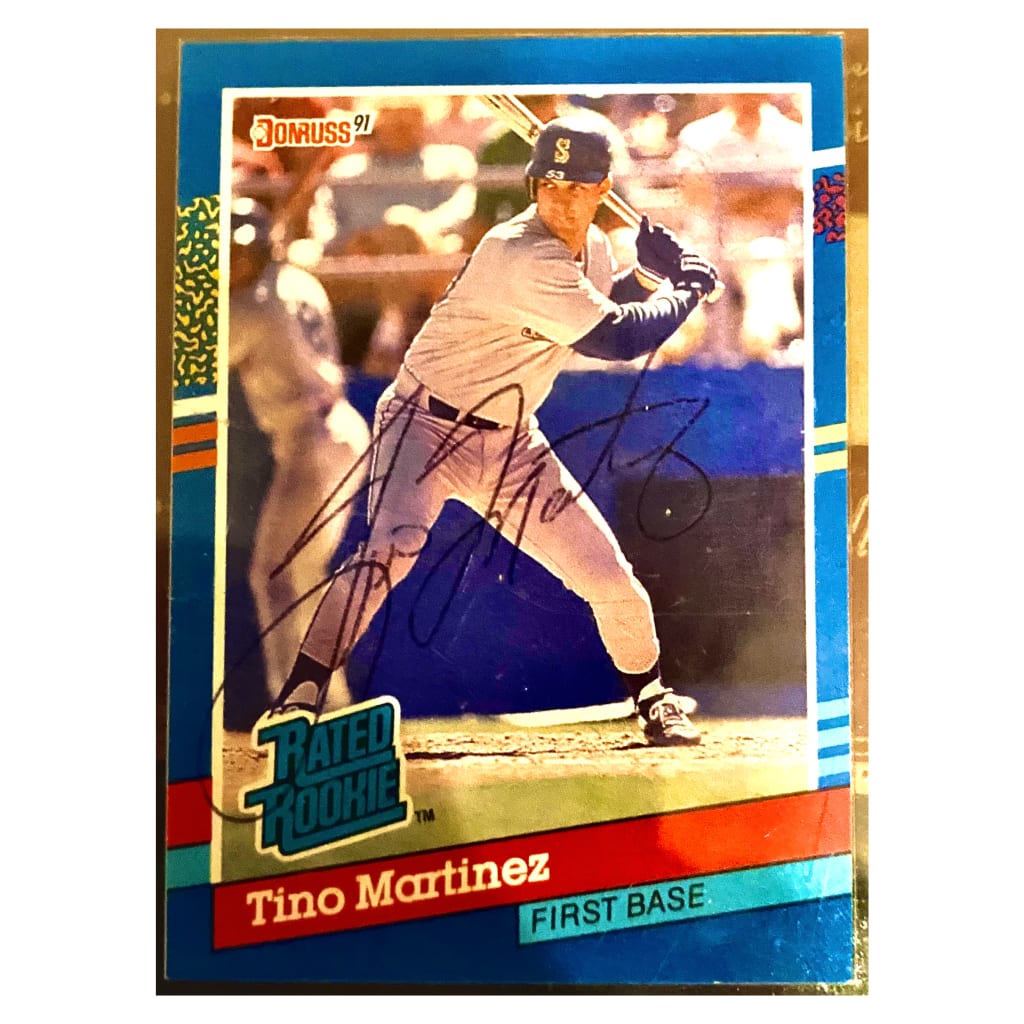
Tino Martinez, 1991 Donruss
Though Tino is most famous for being a four-time World Series champion in the Yankees dynasty of the late 1990s, he started his career with the Mariners and was an All-Star in Seattle, too.
This is Martinez's rookie card, with Donruss' classic "Rated Rookie" emblem, and the lefty about to let loose a swing. The card was submitted by Aiden of Tampa, Fla., who got it signed by Martinez.
"My dad grew up with him in West Tampa, so he is one of my favorite players," Aiden explains. "To have his autograph is really cool, but to have it on his rookie card is even better."
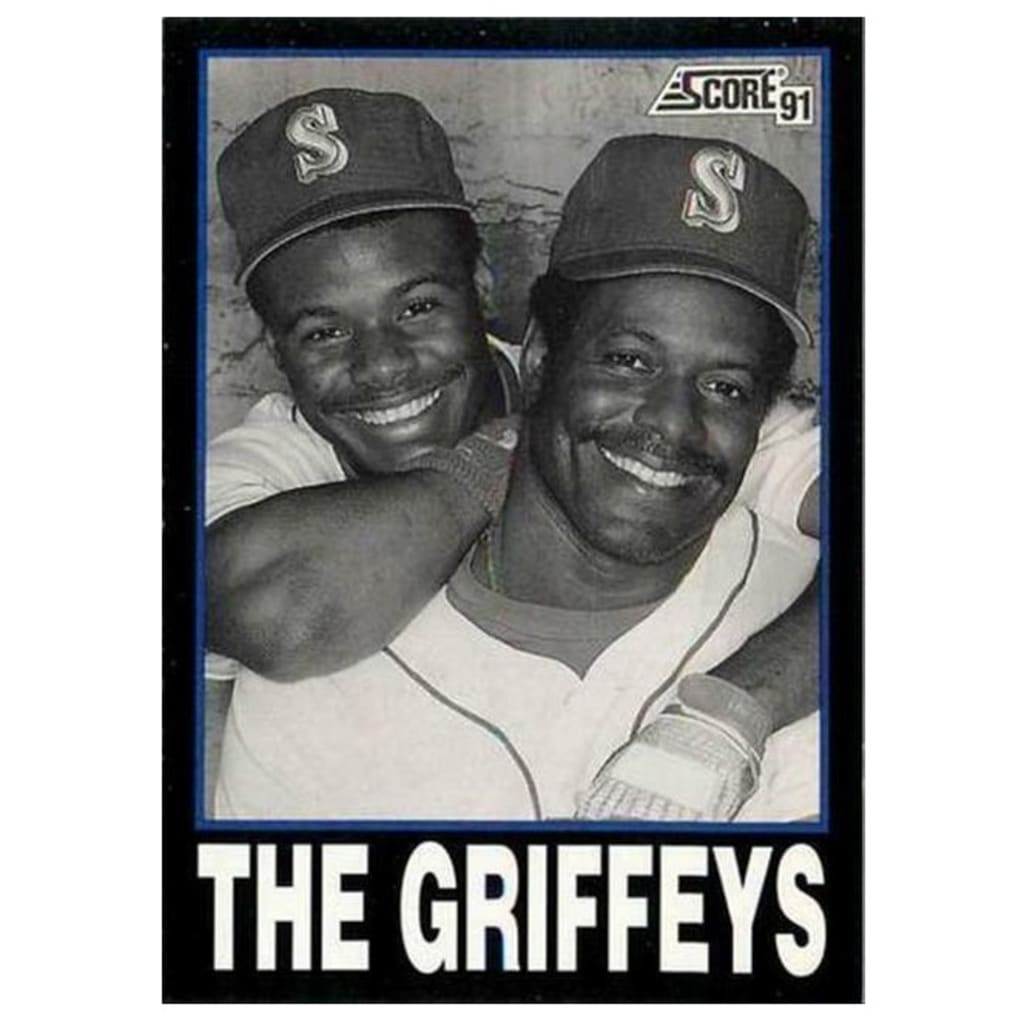
Ken Griffey and Ken Griffey Jr., 1991 Score
In ‘90, the Griffeys got to experience something that no other father-son duo has -- not only playing in the Majors at the same time but also playing on the same team.
Near the end of his 18th season in the Majors, the elder Griffey was released by the Reds. Less than a week later, the Mariners signed the 40-year-old outfielder, putting father and son on Seattle’s big league roster. Griffey Jr. had debuted the previous season and was in the midst of a strong sophomore campaign when his father joined the club.
The rest of the season, the Mariners batted Griffey Sr. second and Griffey Jr. third in most of their games, and in the top of the first inning on Sept. 14 against the Angels, they became the first father-son duo in MLB history to hit back-to-back homers.
The ‘91 Score set commemorated the unique situation by releasing a card with both Griffeys, who spent one more season together on the Mariners. The black-and-white image does a great job of capturing the close relationship between the two. -- Thomas Harrigan
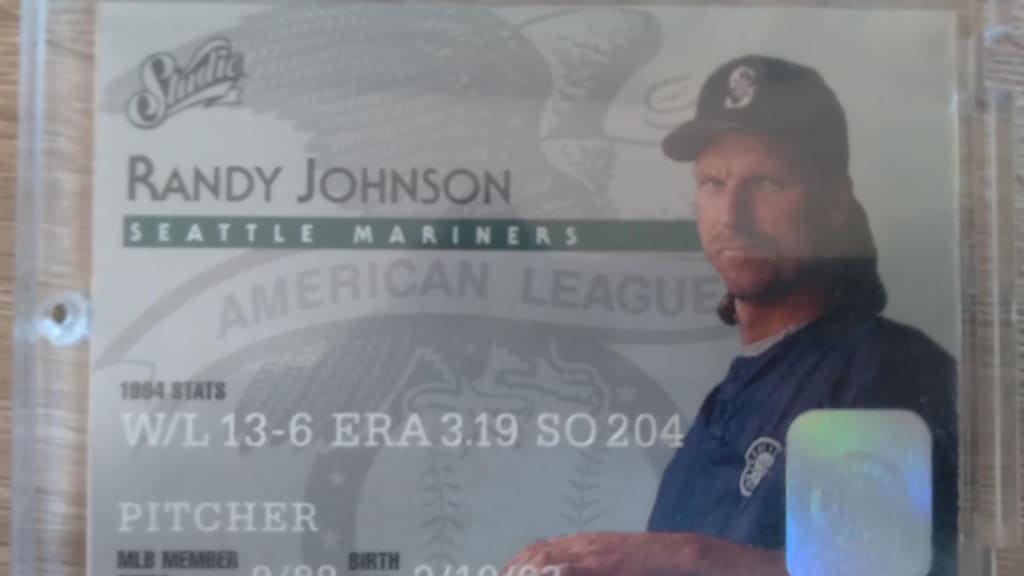
Best Mariners facial hair card: Randy Johnson, 1995 Donruss Studio
Johnson's 6-foot-11 frame certainly had a lot to do with why he was one of the most intimidating pitchers in baseball history. But don't underestimate how much his facial features played a role. As you can see with this 1995 Donruss Studio card, which was designed to look like a credit card, that face isn't exactly welcoming. The goatee and long hair only enhance the intimidation factor that is produced by the Big Unit's scowl, surely a sight prominently featured in the nightmares of American League hitters.
The height and facial expression were only cosmetic elements of what made Johnson so great, of course -- he also had a 100 mph fastball and an absolutely devastating slider that led to four consecutive Cy Young Awards with the D-backs from 1999-2002, as well as a no-hitter and a perfect game (the no-no with the Mariners, with whom he appears on this card, and the perfecto with the D-backs).
Evan D. of Mechanicsburg, Pa., submitted this card in our survey, and while it's one of his favorites, that doesn't mean he knows where he got it from.
"I've never seen this card anywhere else, and it's definitely one of my cooler cards," Evan wrote. "The crazy story behind it though is that I don't know where I got it. It's a complete mystery to me." -- Manny Randhawa
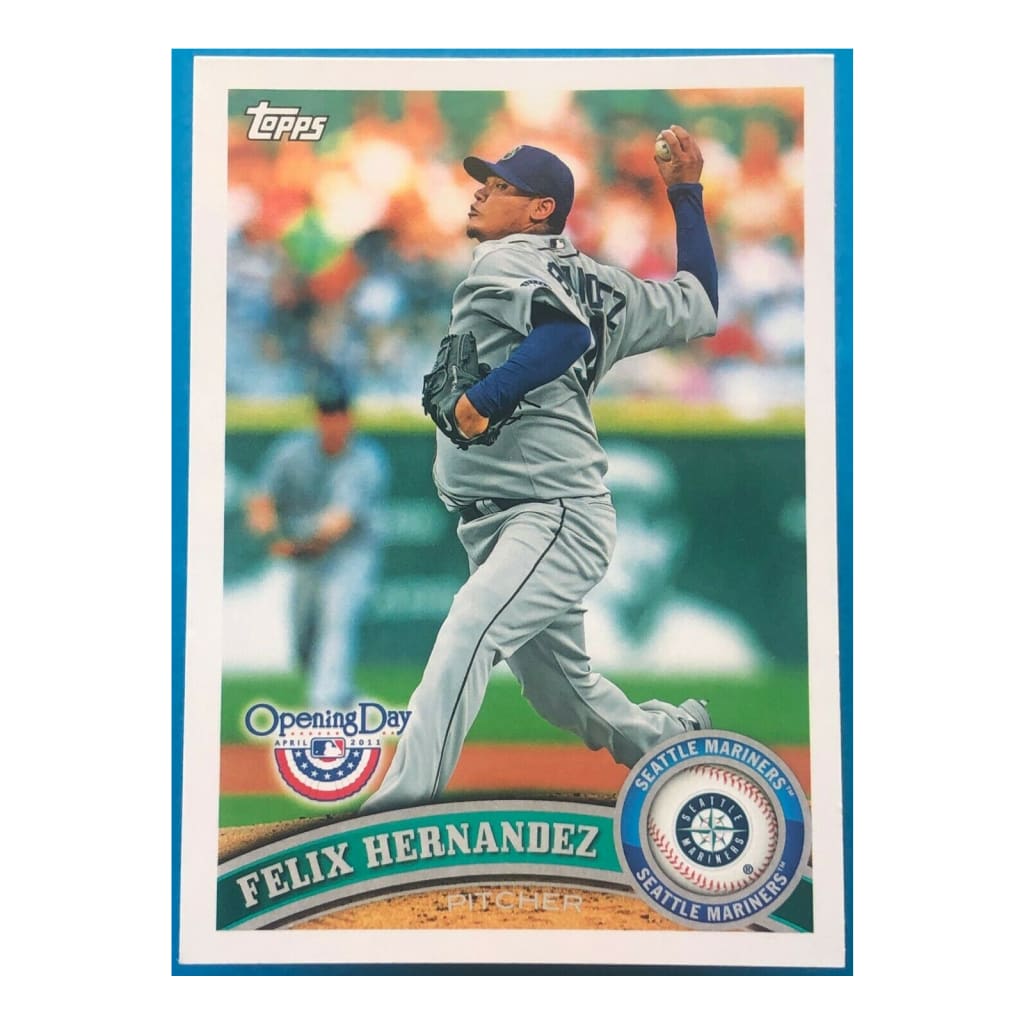
Félix Hernández, 2011 Topps Opening Day
When King Félix took the mound for the Mariners on April 5, 2011, he was the reigning AL Cy Young Award winner. Hernández won the 2010 award after winning the MLB ERA crown with 2.27 and striking out 232 batters in a league-high 249 2/3 innings.
Félix's Opening Day start in '11 was his second of 10 consecutive openers started for Seattle. That streak is tied for the fourth-longest of all time, along with Roy Halladay (2003-12), Steve Carlton (1977-86) and Walter Johnson (1912-21).
Hernández was an ace as usual in 2011, a season that started a run of five straight All-Star nods, and six in seven years, for the then-25-year-old righty. In that span, from 2009-15, Hernández placed in the top 10 of Cy Young voting six times.
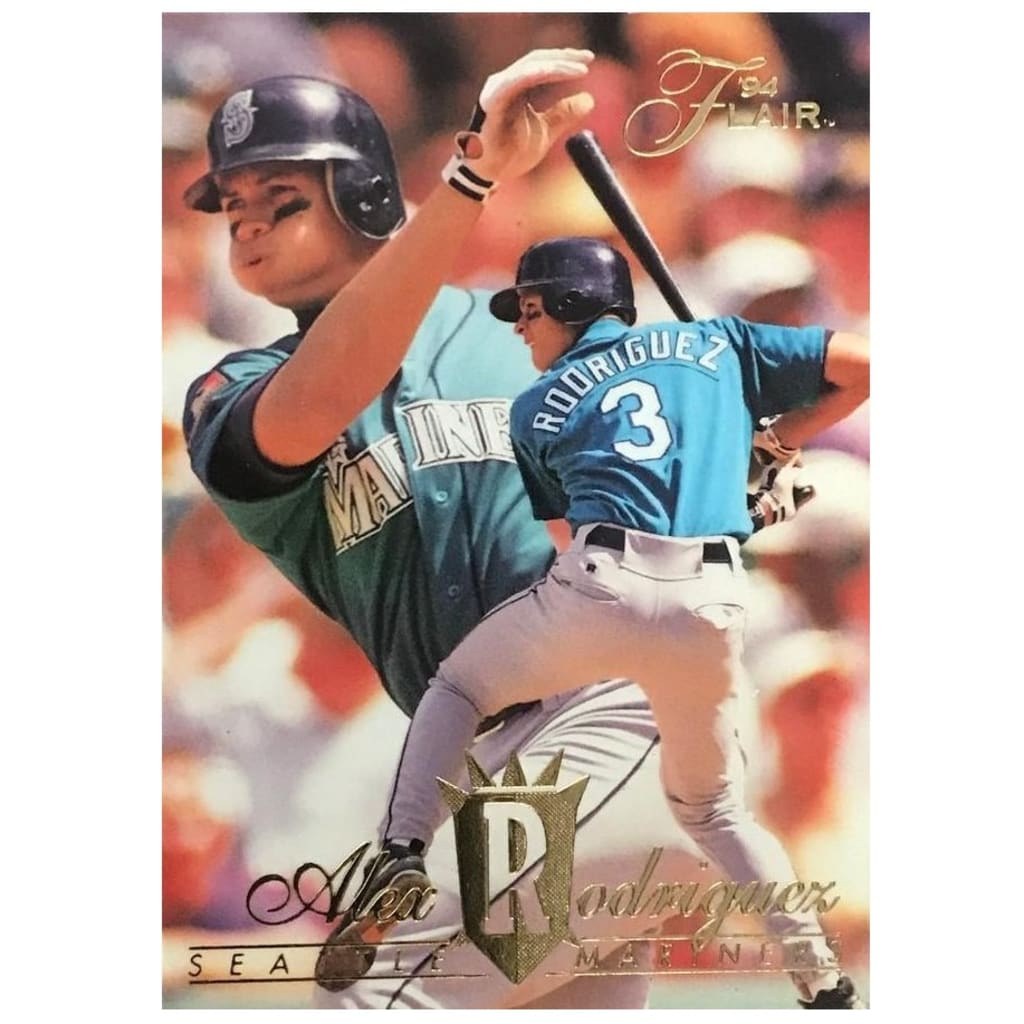
Alex Rodriguez, 1994 Flair
Introduced by the Fleer company in ‘93, Flair was a premium brand featuring the thickest card stock ever used on a trading card. The cards had a high gloss factor and included multiple player images on the front, as well as names printed in gold script.
Series Two of the ‘94 Flair set featured an 18-year-old by the name of Alex Rodriguez, who debuted that July.
A-Rod didn’t hit the ground running in his first stint in the Majors, recording a .204 average with two RBIs in 17 games before the players' strike halted the season. But this card, which depicts Rodriguez both mid-pitch and post-swing, makes him look like a million bucks, and the Mariners’ teal jersey adds to the nostalgia factor. -- Thomas Harrigan
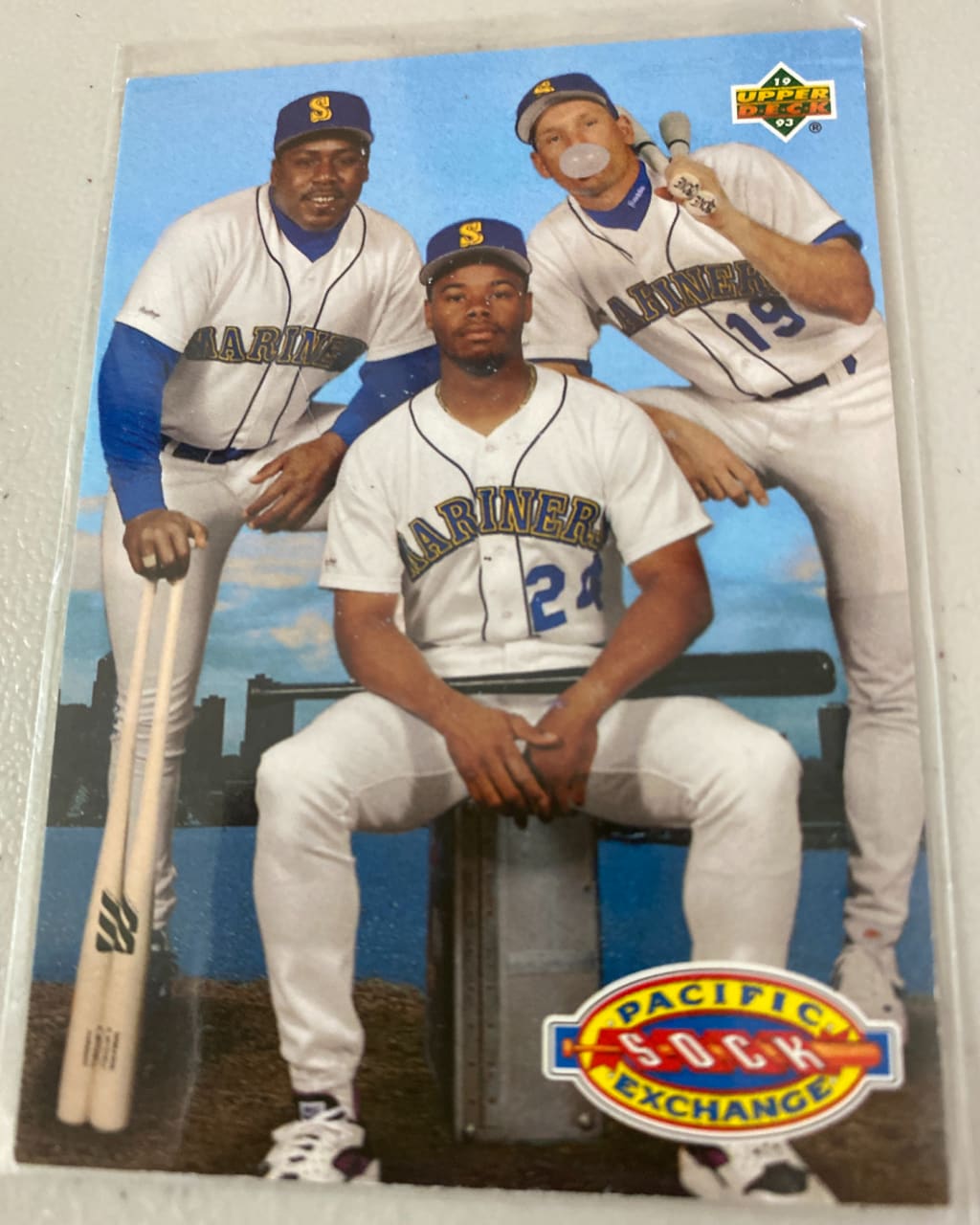
Ken Griffey Jr., Kevin Mitchell and Jay Buhner, 1993 Upper Deck
Wow. How cool is this card?
Any card with Griffey on it is cool by default, but this “Pacific Sock Exchange” card by Upper Deck is next level, adding Mitchell and Buhner to the mix. Most baseball fans will remember Buhner because he hit 307 home runs for the Mariners over 14 seasons, whereas Mitchell played in only 99 games for Seattle in 1992, just before this card was issued. Mitchell was, however, a well-known slugger, as evidenced by his 1989 National League MVP Award with the Giants.
Mitchell may not have been a Mariner for long, but this card is still a reminder of the heart of the Seattle order that year, and that’s not even to mention Hall of Famer Edgar Martinez, who led the Majors by hitting .343 in 1992 and was just coming into his own as a great hitter.
This trio is the epitome of cool, posing across the lake from downtown Seattle with Buhner blowing a bubble with his gum and the three wearing those classic Mariners uniforms with the block lettering across the front.
Jeff T. of Round Rock, Texas, submitted this card, calling it “iconic" and one he vividly remembers pulling from a pack as a kid. You usually don’t think of a card featuring a guy who played for a team in only 99 games as “iconic,” but honestly, it’s hard to argue in this case. -- Manny Randhawa
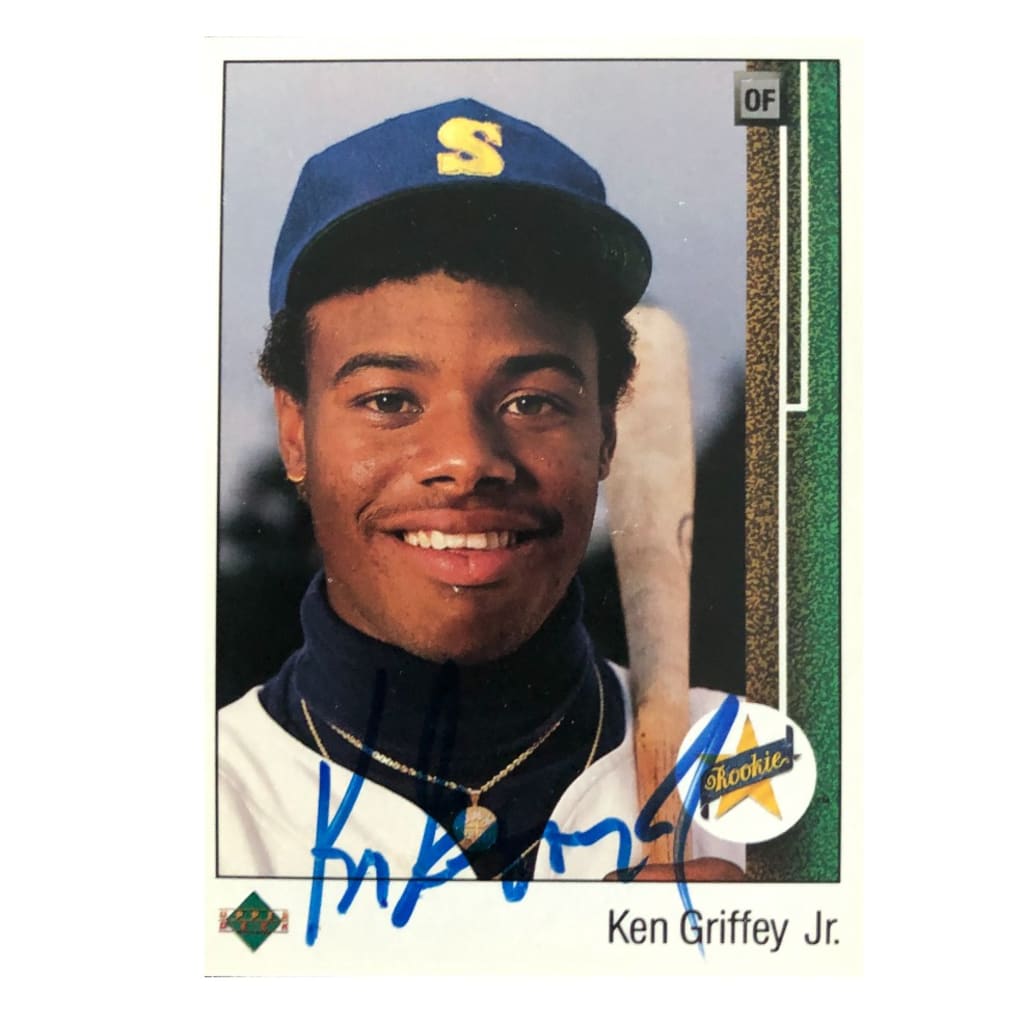
Iconic Mariners card: Ken Griffey Jr., 1989 Upper Deck
This isn’t just one of the most iconic Mariners cards. Card No. 1 in the very first Upper Deck set, Griffey's 1989 rookie card is one of the most recognizable in the history of the hobby, showing “The Kid” with his hair sticking out from beneath his Mariners cap and flashing a toothy smile, looking every bit like the teenager he was.
It was submitted by a large number of fans, including Rex Crum, K.D. Tustin, Dwayne Kistner, Andrew Goss, Scott K. and Robert Pitts Jr.
“My all-time, desert-island favorite baseball card is, without a doubt, the Ken Griffey Jr. 1989 Upper Deck rookie card,” wrote Goss. “I remember hearing at my local card shop that there was going to be a brand new, super high-gloss card line entering the market, which was to be the 1989 Upper Deck cards. I saved up lawn-mowing money for weeks and went and bought as many packs as I could, opening them furiously as soon as I got home. Much to my delight, I found a Ken Griffey Jr. rookie card in the third or fourth pack I opened!
“Better yet, although it always seemed that you got the most forgettable players back-to-back in packs, I got his rookie card, back-to-back! And while I had the good sense to immediately put them into screw-together glass cases, I did not have the sense to keep both; I traded one away that summer. He quickly became one of my all-time favorite players, with the sweetest swing I have ever seen, and I will never forget the feeling of opening that pack and seeing his glowing smile, twice in a row!”
After appearing in Upper Deck's inaugural set -- as card No. 1 in the set, no less -- Griffey made the Mariners out of Spring Training and went on to become one of the game's biggest superstars with Seattle in the 1990s. Meanwhile, his 1989 Upper Deck rookie card would help define an era of sports card collecting. -- Thomas Harrigan
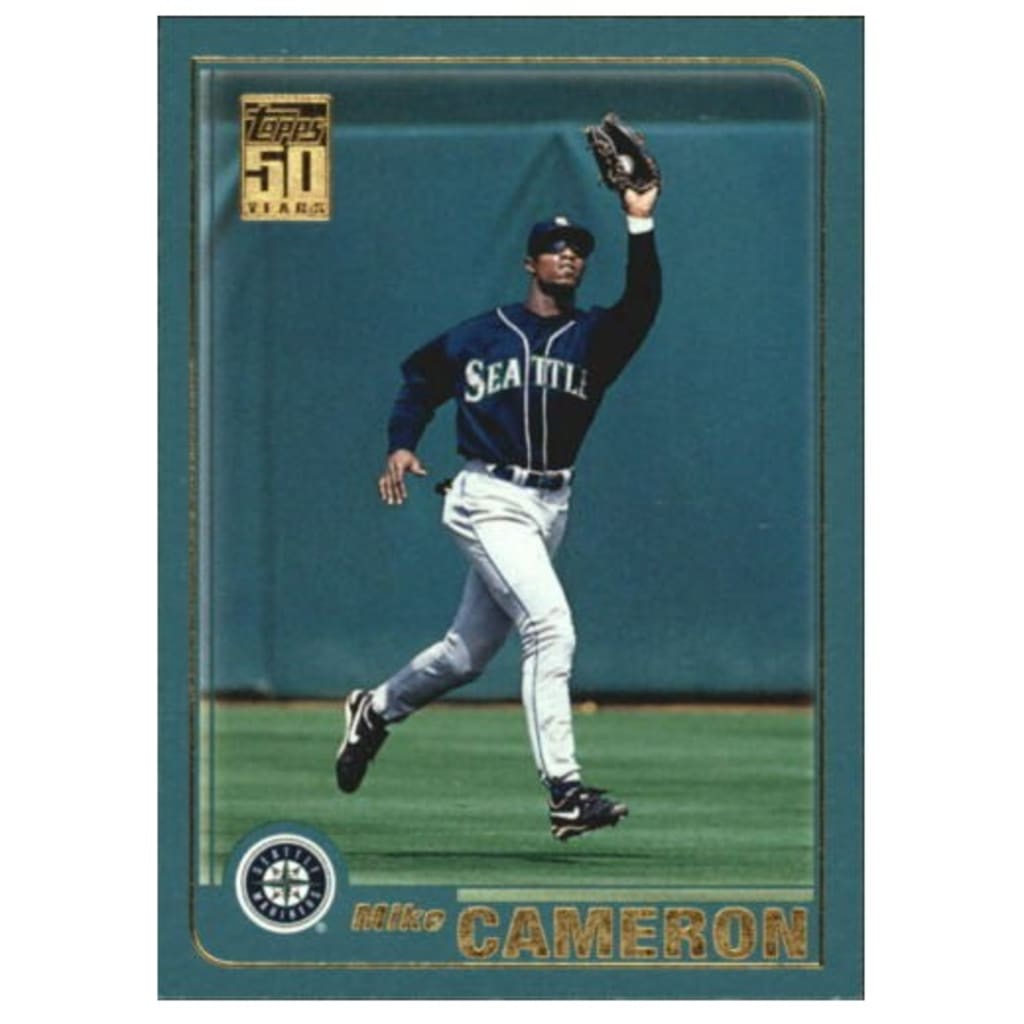
Mike Cameron, 2001 Topps
Included in the four-player package the Reds sent to Seattle for Ken Griffey Jr. after the 1999 season, Cameron had the tough task of succeeding Junior as the Mariners’ starting center fielder.
No one could replace Griffey, but Cameron held his own. Over four seasons with the M’s, he hit .256 with 87 homers, 344 RBIs, 353 runs, 106 stolen bases and a .798 OPS in 610 games. In 2002, Cameron slugged his way to the 13th four-homer game in history.
This card is from 2001, the year Cameron earned the only All-Star selection of his career and won the first of his three Gold Glove Awards. It was a special year all around for the Mariners, who won an AL-record 116 games during the regular season. -- Thomas Harrigan
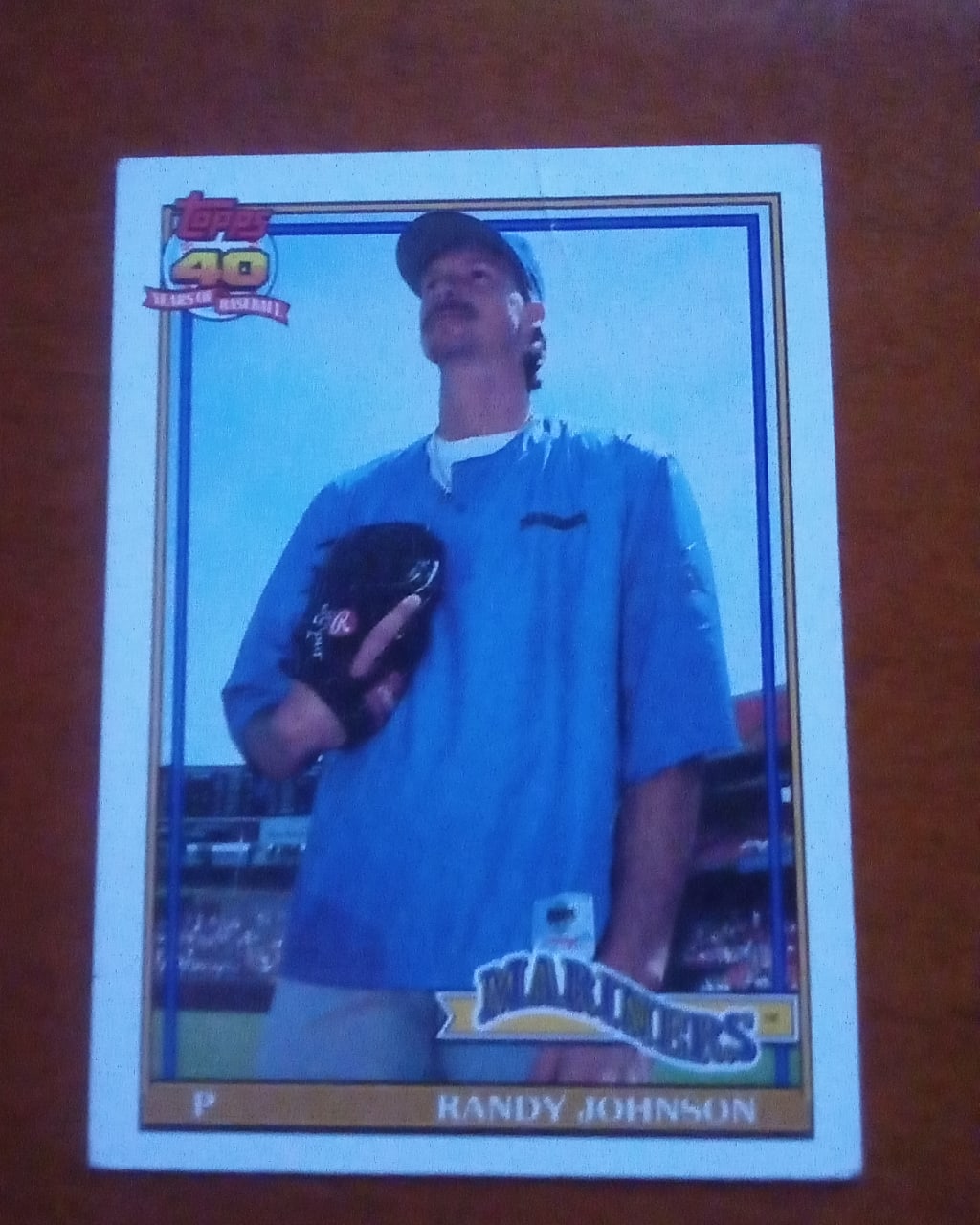
Randy Johnson, 1990 Topps
If you're going to capture the essence of the Big Unit, this is a great way to do it -- from the ground up. The 6-foot-11 left-hander with a triple-digit fastball was as intimidating as they come, and this shot of him does that reputation justice.
Given that Johnson was traded to Seattle from Montreal in 1990, this card is one of his first as a Mariner.
Carlos D. of Montclair, Calif., tells it like it is in his submission for our survey.
"I just like this pic because of the Big Unit's large stature and his classic haircut," Carlos wrote.
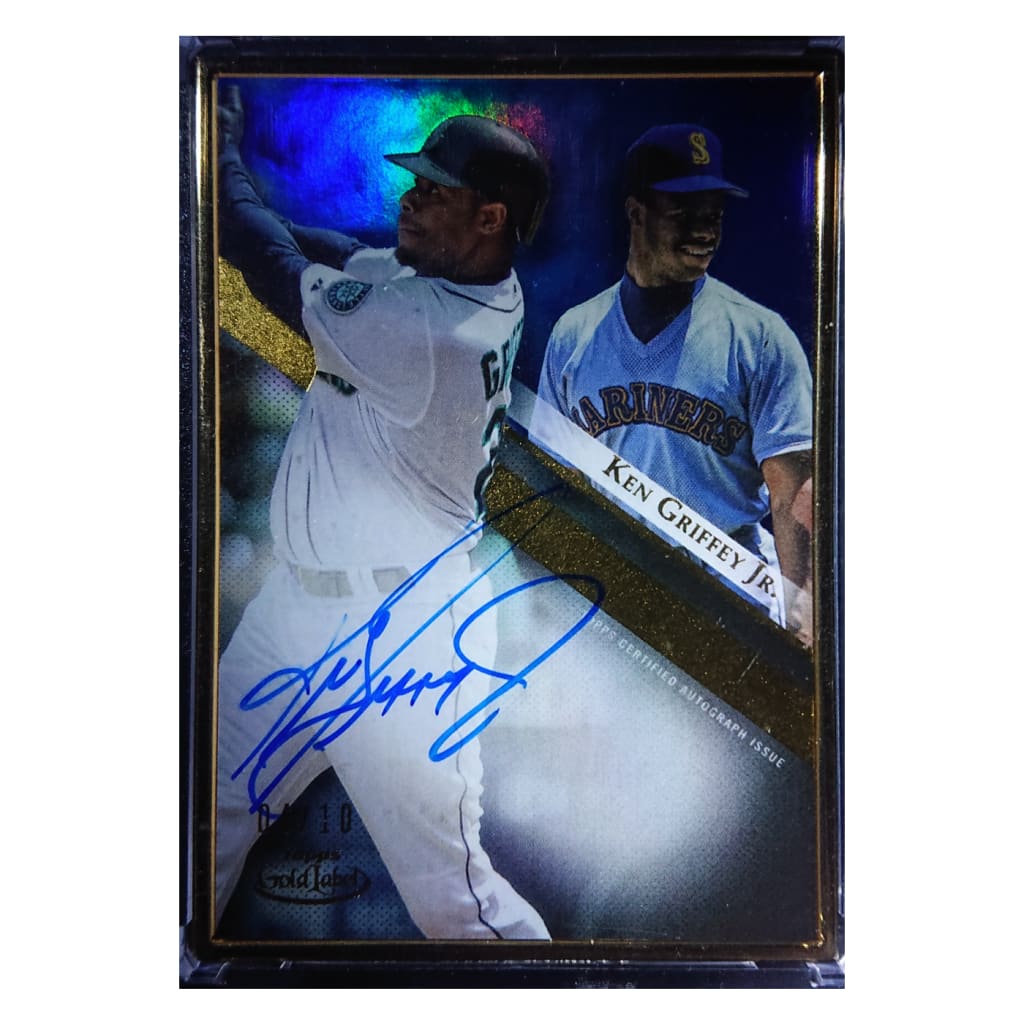
Mariners insert card: Ken Griffey Jr., 2019 Topps Gold Label Framed Autograph
This throwback of Griffey in a Mariners uniform looks great, especially the dual photos -- one of Junior's iconic swing, the other of a young Griffey in the field.
The autograph is placed perfectly too, over the white uniform.
This card comes as a submission all the way from Taiwan. Ben Huang, who sent it in, writes: "My favorite card is probably the first auto I pulled, which is a framed Junior auto from 2019 Topps Gold Label. It was my first-ever hobby box of cards and I was fortunate to have one of the greatest players in history as my first-ever auto."
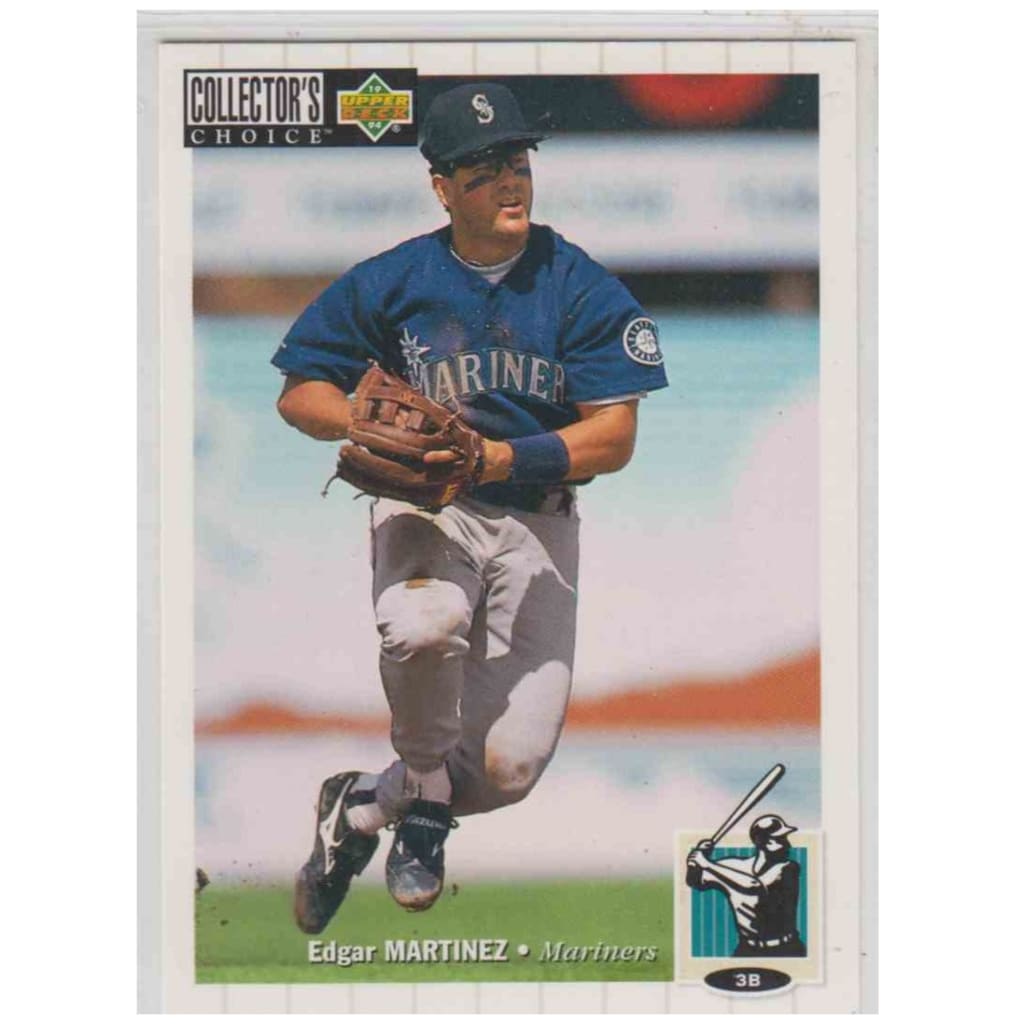
Edgar Martinez, 1994 Upper Deck
Martinez with a glove? There aren’t many cards that show the Hall of Fame slugger fielding, especially after 1994, the last year he played more than eight games on defense.
Martinez was a capable defender at the hot corner early in his career, but with a knee injury limiting his range, manager Lou Piniella decided to make him Seattle’s full-time designated hitter in 1995.
Martinez went on to have one of his best seasons, winning his second AL batting title (.356) and leading MLB in doubles (52), on-base percentage (.479) and OPS (1.107). It also marked the first time in his career he reached the 20-homer and 100-RBI plateaus. -- Thomas Harrigan
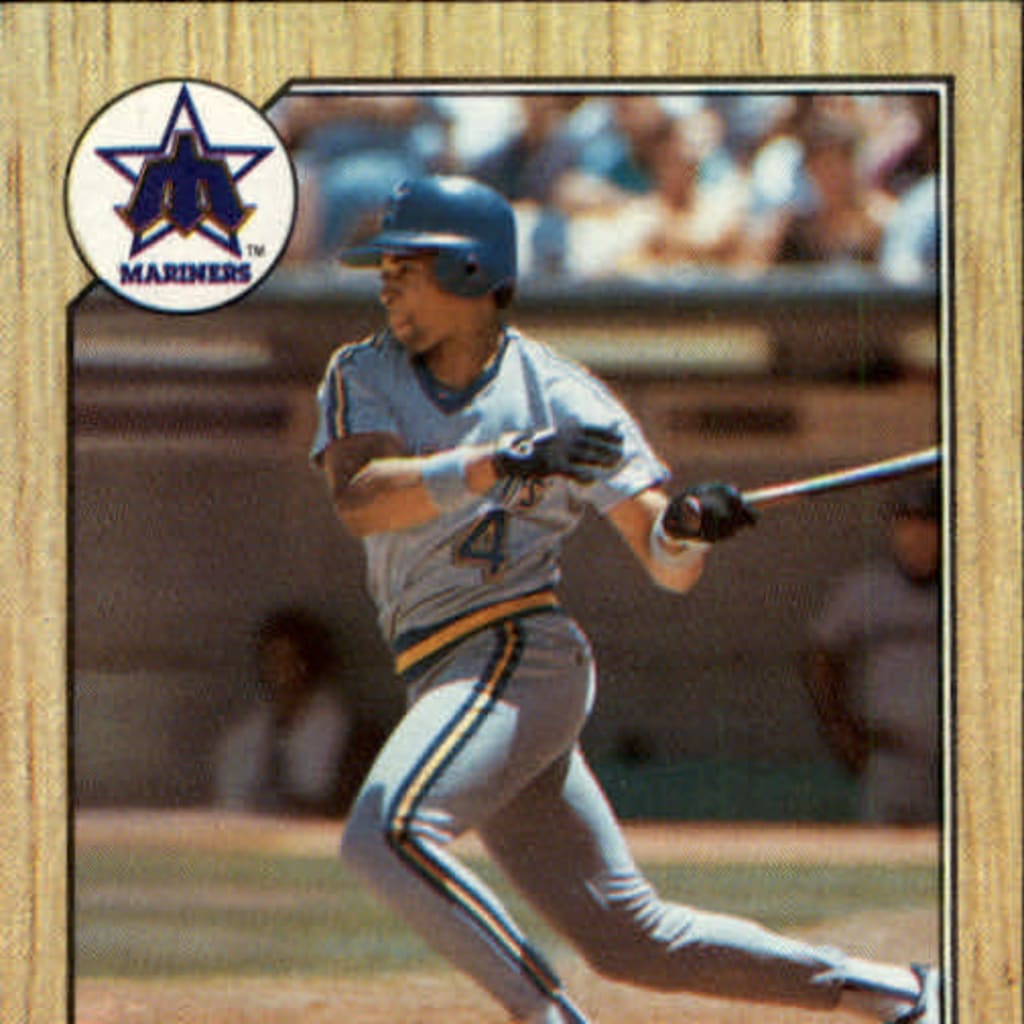
Danny Tartabull, 1987 Topps
You certainly may remember Tartabull from his slugging days with the Royals and Yankees, but do you remember he began his career with the Mariners?
It's true. And for our own Yankees beat writer Bryan Hoch, this Tartabull card holds special significance.
"Tartabull had a nice career, but this really isn’t about him," Hoch wrote. "My dog-eared, paint-splattered Tartabull is the only remaining card from the first pack I ever opened, which I’m guessing that my dad bought for me in '87, when I would have been 5. It was the beginning of my lifelong love affair with baseball. Plus, those old Mariners logos and the wood grain '87 design are pretty sweet."
Pretty sweet, indeed. -- Manny Randhawa

Mario Mendoza, 1981 Topps
Mendoza’s card from the '81 Topps set fits the era perfectly. From the throwback Mariners logo to the almost-too-big specs, it captures the time like no other card in the set.
Mendoza was a light-hitting, glove-first shortstop for the M’s, Pirates and Rangers across nine years in the big leagues, but these days, he’s one of the most recognizable players in baseball. Well, at least his last name is. If you’ve ever heard of “The Mendoza Line,” you’ve inadvertently learned the name of a career backup. Even though Mendoza spent nearly a decade in MLB, he had just four seasons where he hit over .200, the stat line threshold that bears his name. To be fair, though, not many players do something significant enough to have a stat unofficially named after them. -- Nick Aguilera

1990s throwback card: Ken Griffey Jr., 1995 Pinnacle
There are many Griffey cards that have greater monetary value, but you’d be hard-pressed to find one that is as fun as his card from the 1995 Pinnacle set, which depicts the Mariners center fielder in front of his locker blowing a comically sized (and obviously fake) bubble, his hat on backwards and his eyes popping out in amazement.
It’s fun to wonder what the photographer’s instructions were prior to snapping this shot of Griffey. It’s also interesting to catch a glimpse at some of the items in Griffey’s locker, including VHS tapes, packs of Bazooka bubble gum and a newspaper article with the headline, “Mariner HRs inundate Sox.”
“It definitely isn't the first ‘whimsical posed photo’ card, and maybe isn't even the first ‘enormous bubblegum bubble’ card,” wrote Chris Lening of Los Angeles, one of two fans who submitted this card in our survey. “I loved it as a kid, because Ken Griffey Jr. was the coolest, but I like it even more as an adult, because it's a little reminder of how fun it was to watch that guy play baseball.”
The card was also mentioned by Chris D. of Auburn, Ala., who wrote:
“Not only was this a super fun set to collect, this KGJ card has stuck in my head for years. I remember the first time I saw it busting out laughing at it! I was about 14 years old when it came out!” -- Thomas Harrigan
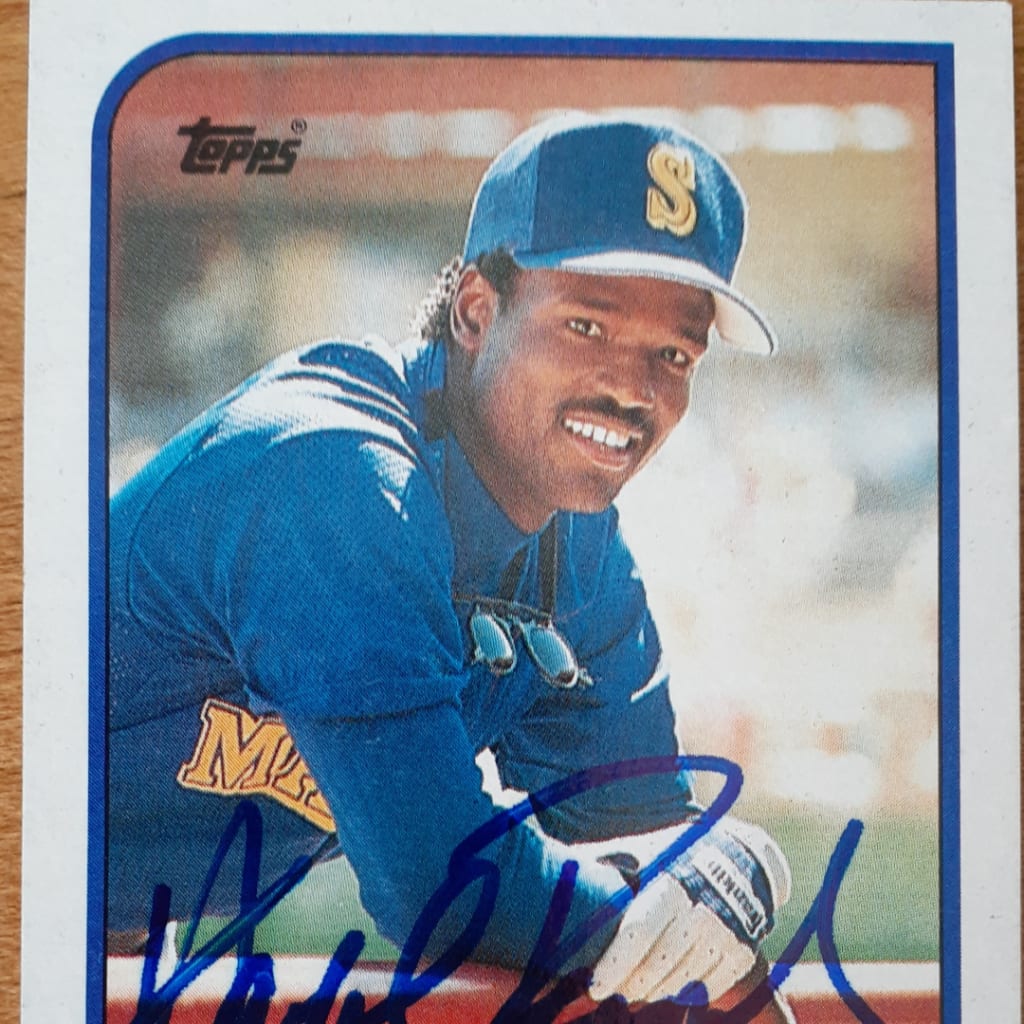
Harold Reynolds, 1989 Topps
Sometimes you go into a ballpark with no expectations of what you'll see or, if you're lucky, who you'll meet. That was the case for Matt B. of Tempe, Ariz., when he attended a Mariners Spring Training game at Tempe Diablo Stadium.
"Growing up down the street from Tempe Diablo Stadium in the late 80s was like every kid's baseball dream come true," Matt wrote when submitting this card in our survey. "My dad would take my brother and me to at least several games each spring. We usually had to wait by the gate until the seventh inning -- that's when they would always let us in for free.
"At the end of the game most of the players would hang out near the dugout and sign autographs. One player who was the most sincerest and gracious I met was Harold Reynolds. I chose his '89 Topps card because it perfectly depicts his personality and more than likely was taken in Tempe, where the Mariners played at the time."
Everything about this card is just right in Matt's baseball world, something every baseball fan would love to have. -- Manny Randhawa
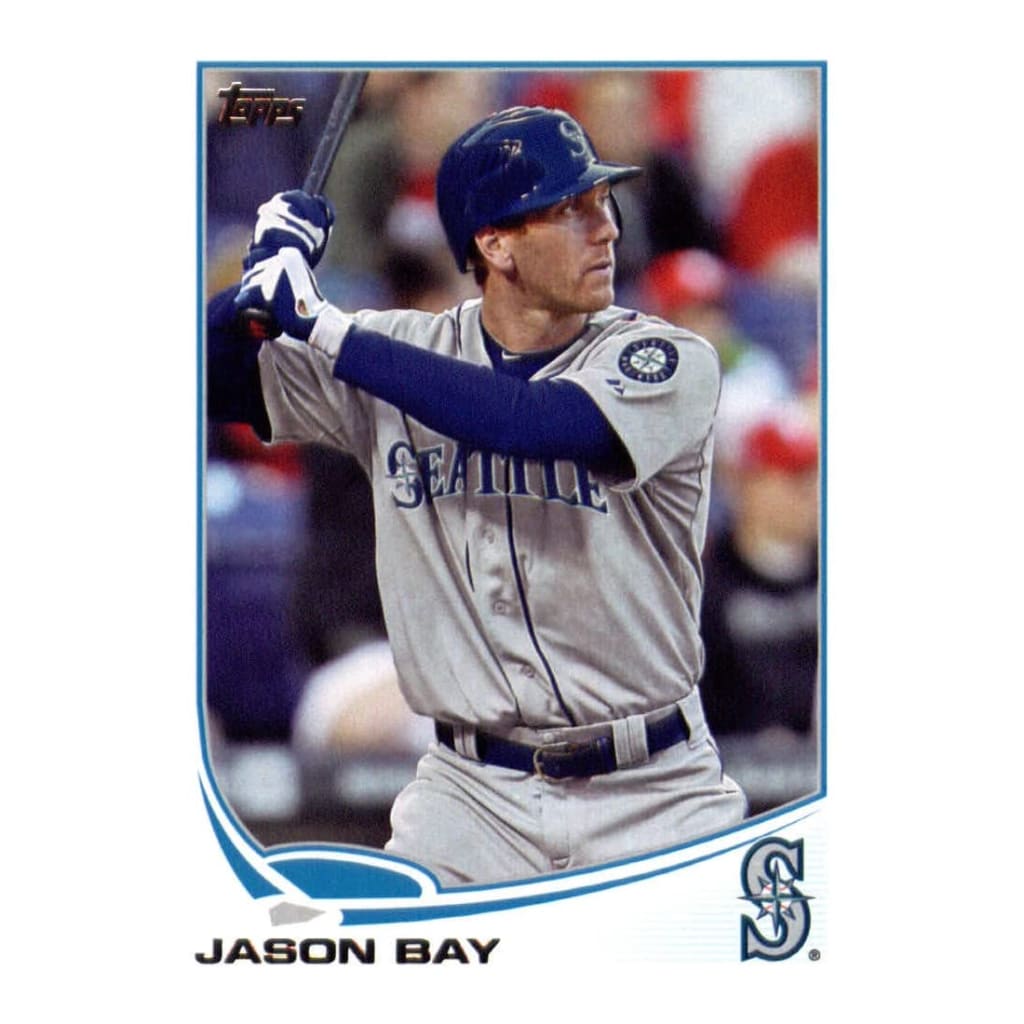
Jason Bay, 2013 Topps
Bay's star years came in Pittsburgh and Boston -- he was a three-time All-Star outfielder with the Pirates and Red Sox, not to mention the NL Rookie of the Year with the Bucs in 2004.
His more infamous years came with the Mets after that, a big signing that didn't work out for New York.
But his final big league season as a Mariner? You might not remember that happened at all, but it's captured here on this card. Bay hit 11 home runs in 68 games for Seattle in 2013 before he retired.
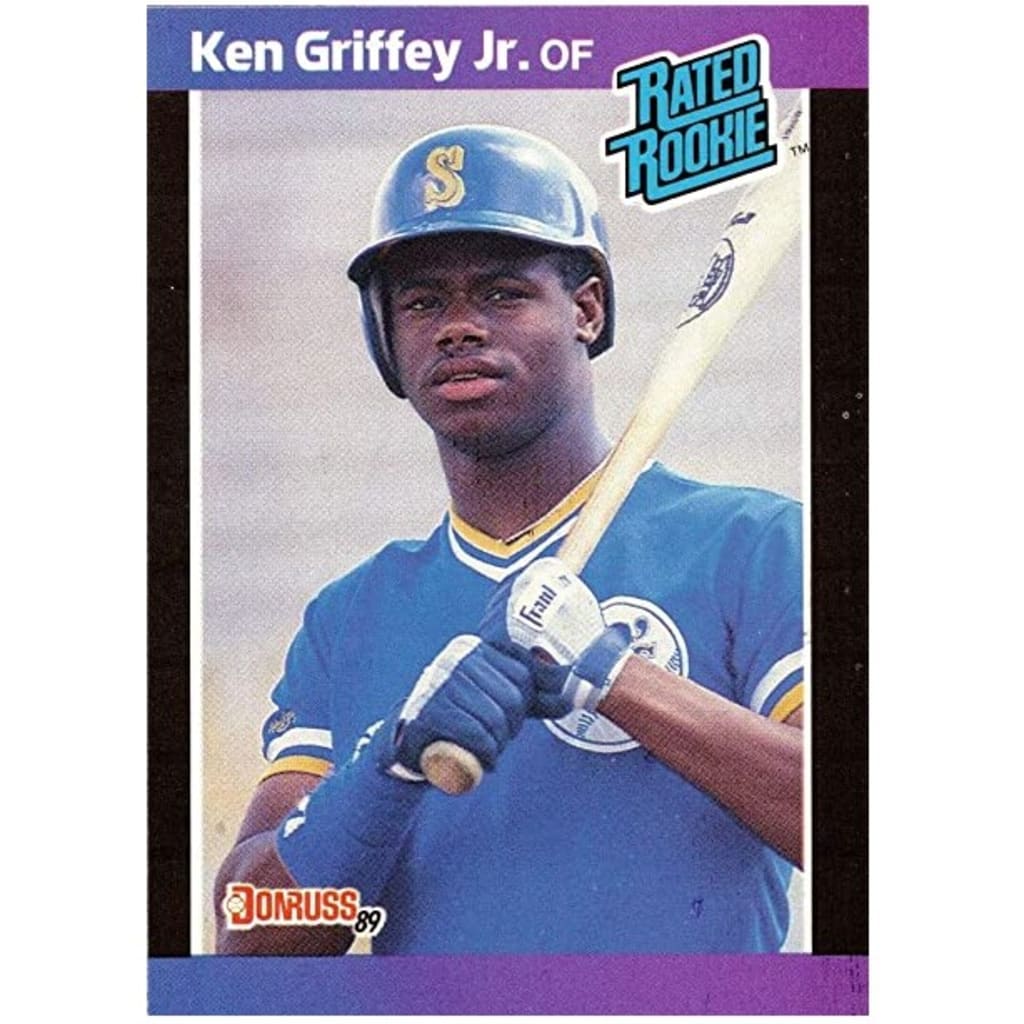
Ken Griffey Jr., 1989 Donruss
While Griffey’s ‘89 Upper Deck card is his most famous rookie card, it’s not his only one. He has a lot, including his “Rated Rookie” card in the ‘89 Donruss set, which was submitted by Jonathon Armand of Providence, R.I.
Armand started collecting cards in ‘89, and Griffey was his favorite player. Griffey’s ‘89 Donruss card is the only one left from Armand’s original collection.
“When I met my wife, we went through a rough financial patch and I parted ways with my massive baseball card collection I started when I was 3 [years old in 1989]. I used to spend hours looking at the cards, remembering stats, sorting and resorting but when we needed money I sold my collection except this one card. My favorite card from my favorite player. After we got in a little better position I came across an eBay listing of the same card and I bought it and it became a monthly habit. Six-plus years later I have 75 cards. It’s not the prettiest collection and not particularly valuable but it brings back all the best memories of baseball [and] time at Fenway [Park] with my dad.” -- Thomas Harrigan
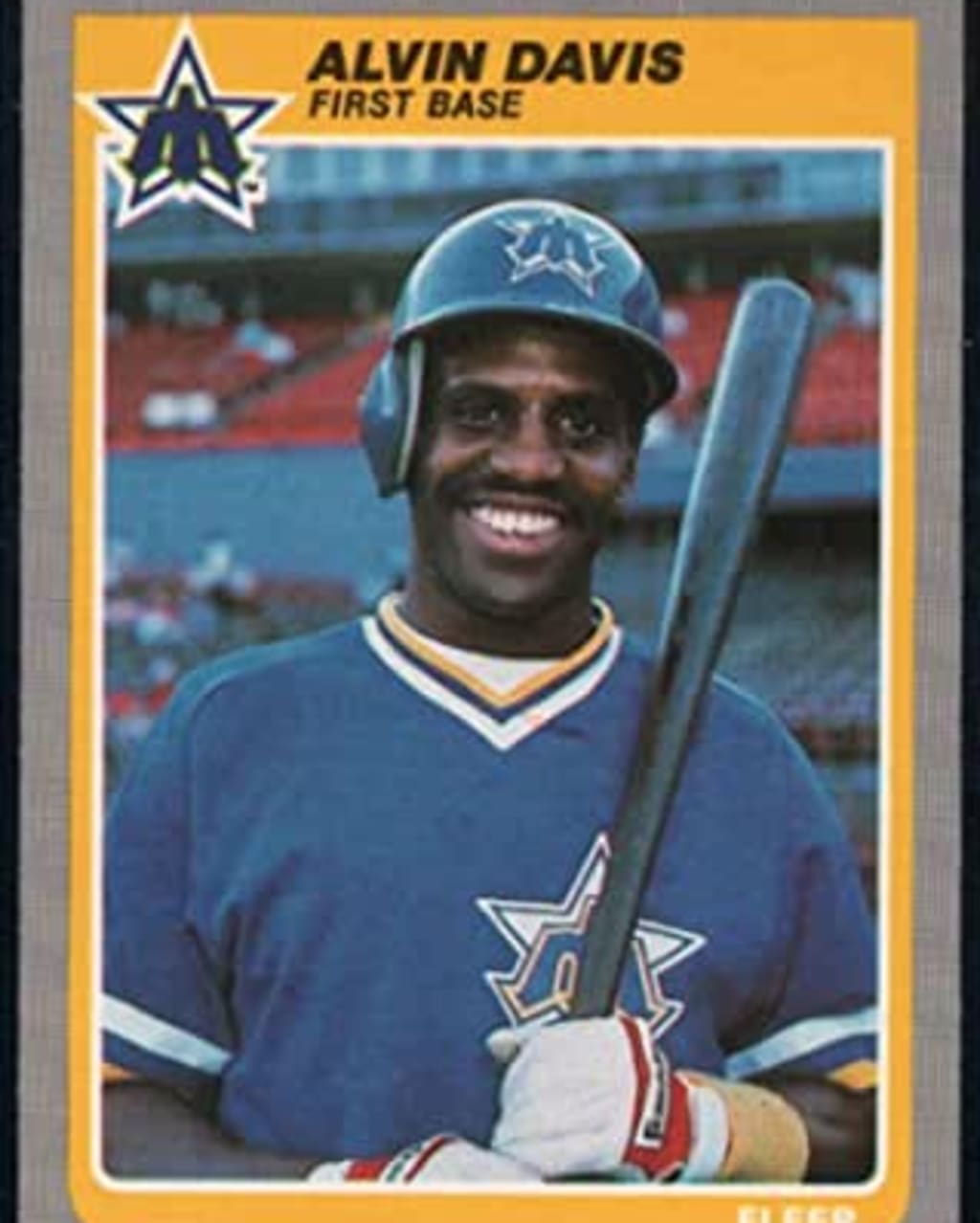
Alvin Davis, 1985 Fleer
Before Ken Griffey Jr., before Randy Johnson, before Edgar Martinez, the Mariners weren’t all that successful in the win-loss column. But they still had some great players, and Davis was one of them.
This card is tremendous for the old-school Mariners trident logo and the bright yellow and blue colors of the uniform alone. But Davis was the 1984 American League Rookie of the Year and an All-Star in that rookie campaign. Over his first seven seasons, ending just as Griffey was establishing himself in the Majors, Davis posted a slash line of .289/.391/.468 and averaged 21 home runs per season.
Andy N. of Seattle submitted this card in our survey, and covered all the bases as to why it’s a beautiful entry.
“I was 5 years old in 1985, and was just beginning to understand baseball,” Andy wrote. “I was also just introduced to baseball cards, which started a collection of thousands of cards throughout my childhood. I remember watching games in the Kingdome in Seattle and getting excited when Alvin Davis would get a hit.
“He was the best player on a pretty bad team for quite a while. Also, it’s just a great-looking card -- the blue and yellow, the mid-80s Mariners star and trident logo.”
It’s always good and important to remember the players who came before the well-known players who led their teams to success. Davis is a great example. -- Manny Randhawa